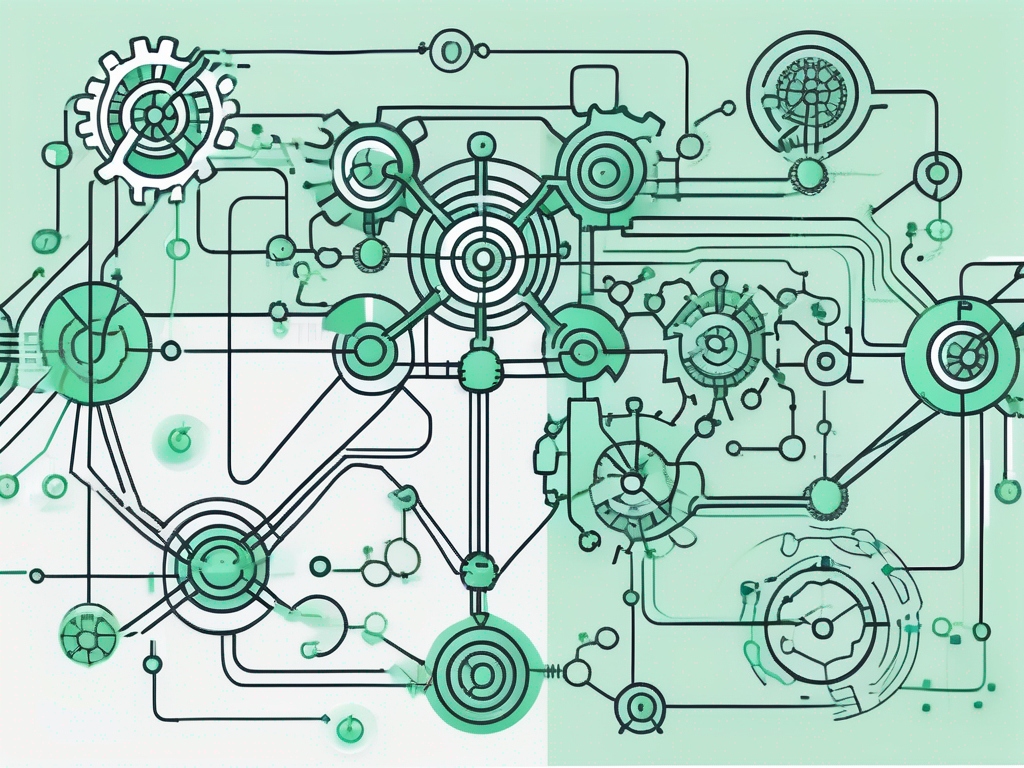.svg)
How AI Agents Work: A Step-by-Step Explanation
.svg)

Artificial Intelligence (AI) has become an integral part of our daily lives, influencing everything from the way we shop to how we interact with technology. Among the many facets of AI, AI agents stand out as particularly intriguing. These agents are designed to perform tasks autonomously, making decisions based on data and algorithms. Understanding how AI agents work can offer valuable insights into the future of technology and its potential impact on various industries.
What Are AI Agents?
AI agents are software programs that perform tasks on behalf of users. They are designed to perceive their environment through sensors, process the information, and take actions to achieve specific goals. These agents can range from simple rule-based systems to complex neural networks capable of learning and adapting over time.
The concept of AI agents is rooted in the idea of autonomy. Unlike traditional software that requires explicit instructions for every task, AI agents can make decisions independently. This autonomy allows them to operate in dynamic environments, responding to changes and optimising their actions to achieve desired outcomes.
AI agents are employed in various applications, from virtual assistants like Siri and Alexa to sophisticated systems in robotics and autonomous vehicles. Their ability to learn from data and improve over time makes them invaluable in scenarios where adaptability and efficiency are crucial.
How Do AI Agents Work?
Perception and Data Collection
The first step in the functioning of an AI agent is perception. This involves collecting data from the environment through sensors or input devices. For instance, a virtual assistant might use microphones to capture voice commands, while a robotic vacuum cleaner uses sensors to navigate a room. The quality and accuracy of this data are critical, as they form the foundation for all subsequent processing and decision-making.
Data collection is not limited to physical sensors. In many cases, AI agents gather information from digital sources, such as databases, APIs, or the internet. This allows them to access a vast array of data, enabling more informed and nuanced decision-making processes.
Data Processing and Analysis
Once the data is collected, the AI agent processes and analyses it to extract meaningful insights. This stage often involves the use of algorithms and machine learning models to identify patterns, make predictions, or classify information. The complexity of these models can vary significantly, from simple linear regressions to deep learning networks with multiple layers.
During data processing, AI agents must filter out noise and irrelevant information to focus on the most pertinent data. This requires sophisticated techniques in data cleaning and feature selection, ensuring that the models are trained on high-quality inputs. The effectiveness of this stage directly influences the agent's ability to make accurate and reliable decisions.
Decision-Making and Action
After processing the data, the AI agent enters the decision-making phase. Using the insights gained from analysis, the agent determines the best course of action to achieve its goals. This decision-making process can be rule-based, where predefined rules dictate actions, or more dynamic, leveraging machine learning models to predict outcomes and optimise decisions.
Once a decision is made, the AI agent takes action. This could involve executing a command, sending a notification, or adjusting its behaviour in real-time. The ability to act autonomously is what sets AI agents apart from traditional software, enabling them to perform tasks without human intervention.
Types of AI Agents
Reactive Agents
Reactive agents are the simplest form of AI agents. They operate based on a set of predefined rules and respond directly to stimuli from their environment. These agents do not have memory or the ability to learn from past experiences, making them suitable for straightforward tasks where the environment is predictable and static.
Despite their simplicity, reactive agents are highly effective in certain applications. For example, they are often used in video games to control non-player characters, providing consistent and predictable behaviour that enhances the gaming experience.
Deliberative Agents
Deliberative agents, also known as goal-based agents, are more sophisticated than reactive agents. They possess an internal model of the world, which they use to plan and make decisions. These agents can evaluate different strategies to achieve their goals, considering potential outcomes and selecting the most favourable path.
Deliberative agents are commonly used in applications where decision-making involves complex reasoning and planning. For instance, they are employed in autonomous vehicles to navigate traffic, taking into account various factors such as road conditions, traffic signals, and pedestrian movements.
Learning Agents
Learning agents represent the pinnacle of AI agent sophistication. These agents can learn from their experiences and adapt their behaviour over time. They utilise machine learning techniques to improve their performance, continuously refining their models based on new data and feedback.
Learning agents are particularly valuable in dynamic environments where conditions change frequently. They are used in applications such as personalised recommendations, where they adapt to user preferences and provide increasingly accurate suggestions.
Applications of AI Agents
Virtual Assistants
Virtual assistants are one of the most recognisable applications of AI agents. These systems, such as Apple's Siri, Amazon's Alexa, and Google Assistant, use natural language processing to understand user commands and perform tasks ranging from setting reminders to controlling smart home devices.
The success of virtual assistants lies in their ability to learn from user interactions, improving their accuracy and expanding their capabilities over time. They exemplify the potential of AI agents to enhance convenience and productivity in everyday life.
Autonomous Vehicles
Autonomous vehicles rely heavily on AI agents to navigate and operate safely. These agents process data from a multitude of sensors, including cameras, radar, and lidar, to perceive the environment and make driving decisions. They must balance safety, efficiency, and comfort, requiring advanced decision-making capabilities.
The development of autonomous vehicles showcases the potential of AI agents to revolutionise transportation, offering benefits such as reduced traffic congestion, lower emissions, and increased accessibility for individuals unable to drive.
Healthcare
In healthcare, AI agents are used to assist in diagnosis, treatment planning, and patient monitoring. These agents analyse medical data, such as imaging scans and patient records, to identify patterns and provide insights that support clinical decision-making.
AI agents in healthcare have the potential to improve patient outcomes, reduce costs, and enhance the efficiency of healthcare delivery. Their ability to process vast amounts of data and provide real-time analysis is invaluable in a field where timely and accurate information is critical.
Challenges and Future Directions
Ethical Considerations
The deployment of AI agents raises several ethical considerations, particularly concerning privacy, bias, and accountability. Ensuring that AI agents operate transparently and fairly is crucial to gaining public trust and acceptance. Addressing these ethical challenges requires ongoing research and collaboration between technologists, policymakers, and ethicists.
As AI agents become more prevalent, establishing robust frameworks for ethical AI development and deployment will be essential. This includes creating guidelines for data privacy, ensuring algorithmic fairness, and defining accountability mechanisms for AI-driven decisions.
Technical Limitations
Despite their potential, AI agents face several technical limitations. These include challenges in data quality, model interpretability, and computational efficiency. Overcoming these limitations is critical to realising the full potential of AI agents and expanding their applications across diverse domains.
Advancements in machine learning techniques, such as explainable AI and federated learning, offer promising avenues for addressing these technical challenges. Continued investment in research and development will be key to overcoming these hurdles and advancing the capabilities of AI agents.
Integration and Adoption
Integrating AI agents into existing systems and workflows can be complex and resource-intensive. Organisations must consider factors such as compatibility, scalability, and user acceptance when implementing AI solutions. Successful integration requires a strategic approach, balancing technical feasibility with organisational goals and user needs.
As AI agents become more sophisticated, their adoption is expected to increase across various industries. This will necessitate a focus on developing user-friendly interfaces, providing adequate training and support, and fostering a culture of innovation and adaptability.
In conclusion, AI agents represent a transformative technology with the potential to reshape industries and improve our daily lives. Understanding how they work and addressing the associated challenges will be crucial to harnessing their full potential and ensuring their responsible and ethical deployment.
Let's
Let’s discuss how we can bring reinvigorated value and purpose to your brand.







.svg)